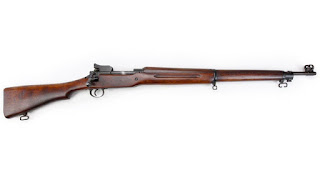and there was rejoicing.
Main thing I was testing today was some black powder loads in .45-70; specifically the Lyman Postell bullet over 66.0 grains of Goex 2f. If you want every detail, used a .060" thick wad between powder and bullet, and tried with both magnum and standard primers.
Fairly steady northerly wind today, and it showed, pushing these a bit to the south at 200. I fired one fouling shot before shooting for groups.
Magnum primers
The one on the bottom right is the fouling shot, and I think I got two through one hole in that cluster right-center. That one to the right I don't know if my fault, or just how it happened. Need to try this load again.
Standard primers
Here I think I messed up somehow, because there's only four holes and none of them look like a double. So where the 5th went, I don't know. Othewise, a good group*.
I also had some loads using a 500-grain round-nose bullet from a Lyman mold, same 20-1 alloy as the Postells above. And I have no idea where they hit. Something badly off, and I need to figure out what.
Had a chance to shoot something interesting today, a US Rifle Model 1917.
Very short version: when we got into WWI, Springfield couldn't make enough 1903 rifles. Several companies were making P14 rifles in .303 for the Brits. Found could bore & chamber for .30-06, and modify the bolt face slightly, and it worked well. And had better sights than the '03. Wound up with more US troops carrying these than carried Springfields.
And, I discovered, this is a LOT easier on the shoulder than the 1903s I've fired. One fine rifle. A P14 and a 1917 would make a good pair, they could talk to each other about old times.
The other stuff fired today was some zeroing and zero checking.
Now I need to clean things, and give my shoulder a rest.
*Yeah, yeah, I know. Shut up.



1 comment:
Regarding the M1917: In General Pershing's book "My Experiences in the World War," he mentions that authorizing the manufacture of Enfields was one of his first acts after the declaration of war. The 1917 was also a very accurate weapon; the M16 has been described as "the most accurate U.S. issued weapon since the M1917 Enfield." Also, in 1924, the M1917 Enfield and the M1917 Smith & Wesson .45 ACP revolver were the first weapons issued to the newly-formed U.S. Border Patrol.
About the "four holes with five shots": It's obvious that, like the hero of the Leatherstocking Tales, you put two bullets through the same hole. If you'd shot at a tree like he did, you'd have found the two bullets stacked fused in the hole. That's how I'd tell the story, anyway.
Post a Comment